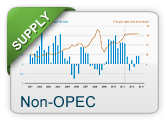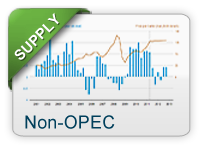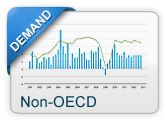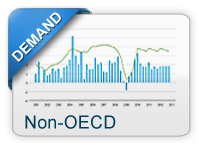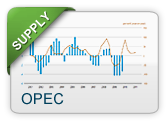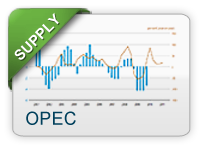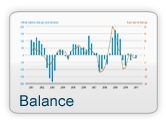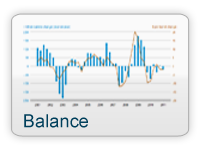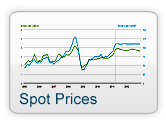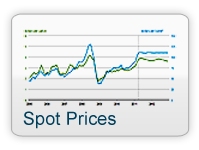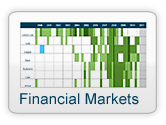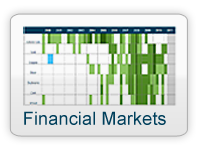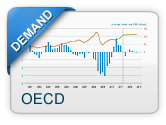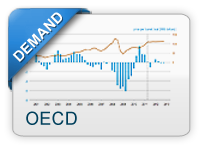What drives crude oil prices: Financial Markets
The price of crude oil isn’t only determined by the push and pull of physical supply and demand in spot markets. At times, oil prices can be affected by activity in financial markets, specifically trading in oil-based financial instruments. These markets allow different types of investors to participate without directly being involved in the oil industry and provide a platform for price discovery and reflecting expectations about future supply and demand.
Market participants in commodity exchanges
Investors trade in oil-based financial instruments depending on their incentives and preferences. Market participants can be both commercial and non-commercial investors. Commercial participants are those directly involved in oil production, consumption, or trade. Examples of commercial participants include oil companies, airlines, and trucking companies. Non-commercial investors are typically financial institutions that trade on financial contracts such as oil futures and options instead of trading physical oil. Examples of such non-commercial investors include investment banks, hedge funds, commodity trading advisors, and asset managers.
Commodities exchanges allow both commercial and non-commercial market participants to actively trade oil-based financial instruments and other energy derivatives such as oil futures, options, commodity indexes and exchange traded funds (ETFs). The New York Mercantile Exchange (NYMEX) is the main exchange for energy financial products in the United States.
Oil futures and energy derivatives trading
In addition to buying and selling oil on the spot market, market participants can enter into contracts for oil delivery in the future at a predetermined date and price. Such standardized contracts, called oil futures, allow participants to reduce their exposure to swings in prices and hedge against price volatility. For example, an airline might buy oil futures to protect itself from potentially rising fuel costs, while an oil producer might sell oil futures to guarantee a price for its future oil production.
Market participants can also invest in oil-based options contracts. Options are financial contracts that provide the right, but not the obligation, to buy or sell an asset, such as oil, at a predetermined price and before a specific date. Options can be written on any asset, including commodities and oil futures.
Options are typically used for strategic exposure to one side of oil price movements (either up or down), while limiting exposure to the other side. For example, an airline that seeks to mitigate potentially high fuel costs may choose to buy an options contract (specifically long a call option) to limit its risk exposure to high oil prices. However, the airline is not obligated to exercise the option, especially when oil prices in spot markets fall, and it can instead allow the option to expire worthless. As such, options contracts allow market participants to limit potential losses and hedge against unfavorable price movements.
Non-commercial participants play an important role in futures markets. They provide liquidity by taking the other side of transactions with commercial participants. This is because every transaction needs a counterparty, and buyers and sellers within the commercial market may not always find each other.
Data source: Commodity Futures Trading Commission, Commitments of Traders Report.
How do futures prices affect oil prices today?
Prices of energy derivatives like futures and options provide market signals about expectations for the future path of oil prices which may guide real world decisions today. For example, if crude oil futures prices suddenly rise, producers might believe that demand is about to surge and might accelerate production. Similarly, buyers may choose to stock up to avoid higher costs in the future. These decisions can change current demand and supply, which in turn affect spot prices.
In addition, non-commercial participants can trade in such large volumes that they shift the perceived value of oil, even without affecting physical supply or demand. These investors typically seek to profit from price changes in energy derivatives or from discrepancies between futures and spot prices. When their positions are large enough, the resulting price movements can temporarily diverge from signals rooted in market fundamentals, creating distortions in how prices are interpreted.
One way to measure activity in futures markets is to look at open interest, or the number of outstanding futures or options contracts that have not been settled, representing the number of active positions in the market. Open interest in crude oil futures contracts traded on the NYMEX has increased significantly since 2000, reflecting the financialization of the oil market.
Data source: NYMEX CME Group
A look at the impact of exchange-traded funds and index funds on oil markets
Exchange-traded funds
Oil futures and options require a sophisticated understanding of oil markets and often involve high transaction costs. Retail market participants can invest in energy derivatives using exchange-traded funds (ETFs) with energy derivatives as the underlying assets.
An ETF is an investment fund that, like a basket, holds many different investments, such as stocks from various companies, futures contracts or physical commodities like gold or crude oil, or bonds. These ETFs trade on stock exchanges like regular stocks. ETFs can be bought and sold throughout the trading day on a stock exchange, just like the stock of a single company.
When someone buys an ETF, they’re not just buying one thing, but a little piece of everything in that basket. Additionally, ETFs are managed by professionals, making investing in commodities like crude oil more accessible to investors unable or unwilling to trade futures contracts. As such, they’re an increasingly popular means for investors to gain exposure to commodities like crude oil.
Commodity index funds
In addition to ETFs, a growing number of investors have gained exposure to crude oil markets by investing in commodity index funds. A commodity index fund is an investment fund that provides exposure to baskets of commodities, without requiring direct investment in futures contracts or physical commodities. These index funds usually establish shares of various energy and other commodities to provide diversity across a range of commodities.
Most index funds are long-only funds; an investment fund that buys assets with the expectation that their value will increase. These funds only hold long positions, meaning that they profit when the price of the asset goes up. They lose money when the value of the asset –in the case of commodity funds, the underlying commodity prices– go down. Many do not trade the individual components of an index on a daily basis; instead, they buy and hold these index funds over periods of months or years, rolling contracts forward to avoid physical delivery.
Data source: Bloomberg L.P.
Increased investment flows can drive up demand and prices. Some people believe that increased trading activity by investors and long-only index funds in oil markets has significantly affected how energy prices are set. However, even with a growing body of academic and industry research, experts haven’t yet definitively proven that this investor trading directly causes energy price swings.
Is there a connection between crude oil prices, other commodity prices, or other financial assets?
The relationship between crude oil prices and other commodity prices is dynamic and complex, displaying both positive and negative correlations depending on the commodity in question and market conditions. Generally, crude oil prices can be connected to other commodity prices through several channels, including input costs for production and transportation, the substitution of biofuels for fossil fuels, and broader economic impacts.
Some notable correlations with commodities include:
- Agricultural commodities. A positive correlation has been observed at times between crude oil prices and some agricultural commodities, particularly those used in biofuel production like soy and corn. Because crude is a major input cost in agriculture –for fertilizer production and transportation– higher crude prices can lead to increased production costs for agricultural commodities, resulting in increased price correlation.
- Metals. The price of some metals, like copper, can show a positive correlation with crude, as they’re both influenced by global economic growth and industrial activity. Some studies suggest rising oil prices, which can contribute to inflationary pressure, can lead to increased demand for gold as a hedge against inflation, leading to some correlation between gold and crude prices.
- Other energy commodities. Natural gas prices, while not always strongly correlated, can be influenced by oil prices, particularly in situations where natural gas is produced alongside oil. The once strong link between oil and natural gas prices has largely ceased in the United States, mostly because the rapid growth of shale gas production that began in the mid-2000s significantly increased natural gas supply, keeping its price relatively low.
Data source: U.S. Energy Information Administration, Bloomberg L.P., CME Group
Similar to the relationship between crude and commodity prices, crude prices have complex relationships with stocks, bonds, and currencies. These relationships are often influenced by factors like inflation, economic growth, and market sentiment.
- Stocks. Economic conditions can cause prices for stocks and commodities, including oil, to move higher or lower together. As macroeconomic conditions improve, earnings for companies increase and demand for commodities as raw materials rise. The opposite tends to happen when the economy slows down.
- Bonds. As economic conditions improve, interest rates on government bonds will tend to rise, and vice versa. Since bond prices and interest rates move in opposite directions, U.S. treasury bond prices and the price of crude oil also tend to move in opposite directions in times of significantly changing economic conditions.
- U.S. dollar. Crude oil is primarily priced and traded in U.S. dollars globally. The relationship between the U.S. dollar and crude oil prices is complex. Over the last several decades, the exchange value of the U.S. dollar and oil prices have tended to move in opposite directions, a negative correlation. When oil prices rose, the value of the dollar often weakened, and vice versa. Researchers posit several possible reasons for this:
- Because oil benchmarks are traditionally priced in U.S. dollars, a depreciation of the dollar decreases the effective price of oil outside the United States. This decreased cost may increase consumers' demand for oil, adding upward pressure to prices.
- U.S. dollar depreciation decreases the effective profits of non-U.S. producers, when converted into foreign currencies. To counteract this, these countries may target higher dollar prices of oil to maintain real revenue, budget levels, and purchasing power in world markets.
- A rise in oil prices also expands the U.S. trade imbalance, which can put additional downward pressures on the dollar.
However, the significant rise in U.S. crude production –and exports– spurred by the shale boom have complicated the relationship between oil and the U.S. dollar, and it’s occasionally shown positive correlation.
Data source: U.S. Energy Information Administration, Bloomberg L.P., CME Group
1 U.S. dollar index (DXY), a weighted index of a basket of currencies, per U.S. dollar. 2 Based on the negative of the change in yield on 30-year government bonds. 3 Based on daily changes in the 5-year Treasury-TIPS (Treasury Inflation Protected Securities) spread.
However, even with observed correlations between crude oil prices and other commodity prices, as well as crude oil prices and other asset classes, it’s not clear how much of the correlation is due to a direct, causal relationship. Instead, these correlations could be attributed to broader external facts, such as their shared connection to global economic growth. For instance, if the global economy is expanding, demand for both crude oil (as a raw material) and various financial assets tends to increase, leading to a correlation in their prices.
Furthermore, major worldwide events like the Great Recession or the COVID-19 pandemic can significantly impact commodities, markets, finance, policy, and economies simultaneously. Such widespread events can cause crude oil, other commodities, and different asset classes to move in tandem, clouding any direct causal links. Another complicating factor is that the strength and nature of these relationships are not constant and can change over time.

